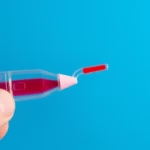Understanding Implantation Bleeding
When a woman becomes pregnant, she may experience a phenomenon known as implantation bleeding. This occurs when the fertilized egg attaches itself to the lining of the uterus, which can sometimes lead to light spotting or bleeding. This event typically happens around six to twelve days after conception, coinciding closely with when a woman might expect her menstrual cycle. Recognizing the timing and characteristics of implantation bleeding is crucial for understanding early pregnancy signs.
Women often confuse this bleeding with their menstrual period, given that both can involve some degree of spotting. However, implantation bleeding is usually much lighter than a regular menstrual flow and might be pinkish or brown in color instead of bright red. Knowing about implantation bleeding and its timing can help women determine when to take a pregnancy test for the most accurate results.
What is Implantation Bleeding?
Implantation bleeding is a natural occurrence during early pregnancy. As mentioned, it happens when the fertilized egg implants itself in the uterine lining, leading to slight vascular irritation. Many women may experience this bleeding on or around the time their period is due, and it can sometimes lead to confusion regarding pregnancy status.
The bleeding is typically very light and lasts for a few hours to a couple of days. Understanding this phenomenon can play a vital role in recognizing the early stages of pregnancy and can assist women in timing their pregnancy tests correctly.
The volume of blood can vary among women. Some might notice just a drop or two, while others may see slightly more. However, the key point is that implantation bleeding does not resemble a normal menstrual period. It should be lighter in flow, and the color may vary from pink to brown. Knowing these characteristics can help clarify whether spotting is related to implantation or menstruation.
As this event occurs during early pregnancy, it is critical to understand when to take a pregnancy test. Knowing the appropriate time frame is essential for obtaining reliable and accurate results. The best time to test is typically a few days after the bleeding occurs.
In summary, recognizing implantation bleeding is crucial. It can serve as an early indicator of pregnancy, allowing individuals to act promptly in seeking medical advice or confirming their pregnancy status through testing.
When Does Implantation Bleeding Occur?
Implantation bleeding usually occurs about six to twelve days post-conception. This period corresponds with the window in which a fertilized egg travels down the fallopian tube to the uterus. Once planted into the uterine lining, the process of implantation triggers various biological responses, including slight bleeding.
Understanding the timing is essential for anticipating when pregnancy tests can yield positive results. Since many women may not realize they are pregnant until they miss their period, recognizing implantation bleeding can offer crucial insights into the timing of potential pregnancy tests.
Women need to monitor their cycle closely and note any unusual signs, such as light spotting that appears before their expected menstrual date. Spotting at this time could be an indication of implantation bleeding.
It’s beneficial to keep a menstrual calendar that tracks your cycle length and any symptoms that may arise. A clearer picture of your cycle helps in determining when the bleeding occurs and differentiating between regular menstruation and potential implantation bleeding.
If you notice slight bleeding or unusual changes during the mid-luteal phase of your cycle, take prompt action by planning to take a pregnancy test a few days after the occurrence. This approach maximizes your chances of receiving an accurate result and can provide a peace of mind.
How to Differentiate Implantation Bleeding from Menstrual Bleeding?
Distinguishing between implantation bleeding and menstrual bleeding can be challenging for many women. However, some characteristics can aid in easily identifying the two. During implantation, bleeding is typically lighter and shorter in duration.
- Color: Implantation bleeding often appears brown or pink, while menstrual blood is usually bright red.
- Flow: The flow during implantation bleeding is generally very light, possibly just a few drops, compared to menstrual bleeding, which tends to be much heavier.
- Duration: Implantation bleeding lasts anywhere from a few hours to a couple of days, contrasting with menstruation, which lasts anywhere from three to seven days.
Women may find it helpful to keep track of these symptoms in their menstrual diaries to help with determining future cycles or pregnancies. In certain cases, if the bleeding continues or becomes heavier, it’s important to consult with a healthcare professional.
Understanding these subtle differences not only aids in recognizing potential pregnancy but also in identifying any unique health concerns that may arise during the menstrual cycle.
When uncertain, it’s always better to err on the side of caution. Whether the bleeding is a part of your menstrual cycle or an early sign of pregnancy, seeking medical advice can ensure your health and peace of mind.
Symptoms of Early Pregnancy Alongside Implantation Bleeding
Along with implantation bleeding, women may encounter various symptoms indicative of early pregnancy. Understanding these signs can help in confirming suspicions of potential pregnancy.
- Missed Period: A missed period is often one of the first signs of pregnancy.
- Nausea: Morning sickness can begin as early as two weeks after conception.
- Breast Changes: Women may notice sore or swollen breasts during early pregnancy.
- Fatigue: Increased tiredness is common in the initial weeks following conception.
- Frequent Urination: Hormonal changes can lead to increased urination.
These symptoms do not uniquely apply to pregnancy as they can also result from hormonal changes, stress, or other factors. However, when combined with the timing of implantation bleeding, these signs might give a stronger indication of pregnancy. If experiencing multiple symptoms, consulting with a healthcare provider for a pregnancy test or a blood test is advisable.
Recognizing these early signs is essential for women to take the necessary steps towards managing their health and preparing for a potential pregnancy. Early confirmation can lead to better prenatal care and monitoring.
Timing Your Pregnancy Test after Implantation Bleeding
After experiencing implantation bleeding, it’s essential to understand the best timing to take a pregnancy test. As with timing around a missed period, the timing around implantation bleeding can significantly impact the test results.
Most experts recommend waiting about one week after the bleeding occurs before conducting a home pregnancy test. This waiting period allows sufficient time for the hormone hCG, which is produced shortly after implantation, to build up in the urine. Testing too early, such as immediately after the bleeding stops, may yield a false negative result.
In some cases, blood tests conducted by healthcare professionals can detect pregnancy earlier than home tests. These tests measure the level of hCG in the bloodstream, providing more accurate results.
For those looking to use a home test, remember to follow the instructions carefully. Many tests can be over 99% accurate when followed correctly and taken on the first morning urine when hCG levels are often highest.
If the test results are negative but symptoms persist, or if your period does not occur, it is wise to consult a healthcare provider to consider further options, including blood tests.
Possibility of a False Negative Test Result
When taking a pregnancy test too early, there’s a significant chance of obtaining a false negative result. This can lead to confusion and emotional distress for those trying to conceive. Understanding this possibility can prepare individuals for what to expect.
Home pregnancy tests work by detecting the hormone hCG in urine, which may not be present at detectable levels until a few days after implantation. A test taken too early might not pick up the hormone, leading to a negative result. Thus, it is always advisable to wait for the recommended time after a missed period or seven days post-implantation bleeding.
Also, ensure that the test is done properly by adhering to manual guidelines. Factors such as diluted urine, testing at the wrong time of day, and incorrect test handling can influence results.
If in doubt about the test result, repeating the test several days later can often provide clarity. If multiple tests yield negative results but symptoms persist, consulting with a healthcare provider for further evaluation is recommended.
This understanding highlights the importance of timing and proper test procedures for anyone seeking to confirm a suspected pregnancy accurately.
Final Thoughts
In summary, implantation bleeding can serve as an initial indicator of pregnancy, and understanding this phenomenon is vital for anyone trying to conceive. Recognizing when implantation bleeding occurs, differentiating it from menstrual bleeding, and being aware of additional early pregnancy symptoms are crucial steps in the journey of potential motherhood.
It’s essential to wait the appropriate time frame after implantation bleeding to conduct a pregnancy test to yield an accurate result. Making sure to follow testing instructions carefully can minimize risks of false negatives, offering peace of mind during what can be an emotionally charged time.
When a woman suspects she might be pregnant, observing and tracking menstrual cycles can assist in pinpointing when to expect bleeding or symptoms. Early recognition leads to better decision-making and health management, allowing individuals to seek prenatal care or make lifestyle adjustments as necessary. Consulting a healthcare provider for advice and testing can provide clarity and reassurance.
In conclusion, understanding how many days after implantation bleeding can you test positive is essential knowledge for women on their journey through early pregnancy. Paying attention to the body’s signals and responding thoughtfully can help ensure the best outcomes.
Frequently Asked Questions
1. How soon after implantation bleeding can I take a pregnancy test?
It is recommended to wait about seven days after implantation bleeding to take a home pregnancy test for the most accurate result.
2. What does implantation bleeding look like?
Implantation bleeding is usually light, pink, or brown in color and lasts for a few hours to a couple of days. It is lighter than a normal period.
3. Can you have implantation bleeding and still not be pregnant?
Implantation bleeding is typically associated with pregnancy, but it is essential to consult a healthcare provider if the bleeding occurs but pregnancy is not desired.
4. Is it normal to have a ‘normal’ period after experiencing implantation bleeding?
If a woman has a regular period after experiencing what she believes to be implantation bleeding, it usually indicates that she is not pregnant.
5. Can stress affect the timing of implantation bleeding?
Yes, stress can cause irregularities in menstrual cycles, which may affect the timing and experience of implantation bleeding. Understanding personal health and stress management is essential in these cases.
Further Reading
What Type of Psychotherapy Is Best for Anxiety?







